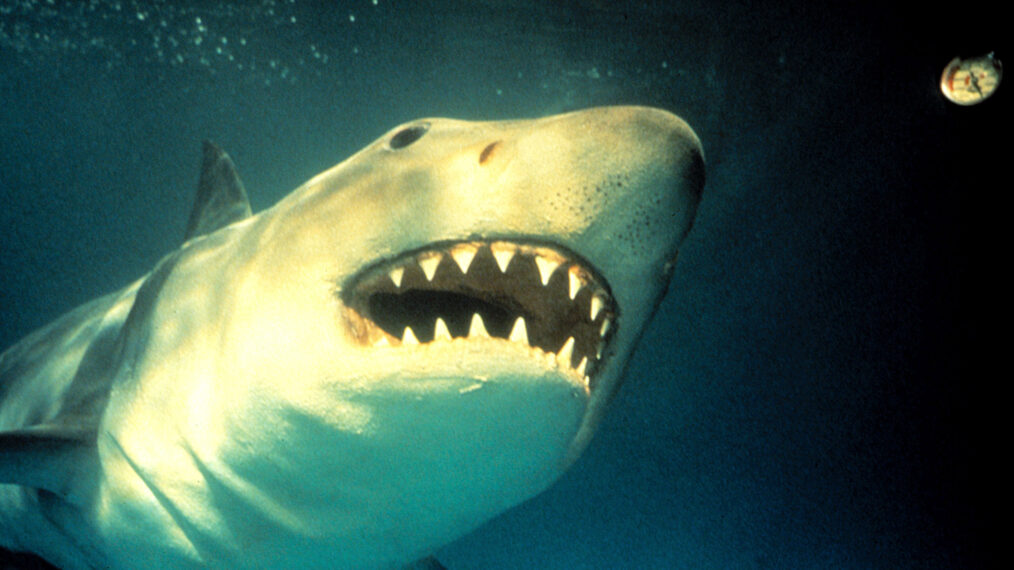Going Back in the Water With ‘Jaws 2’ 45 Years Later
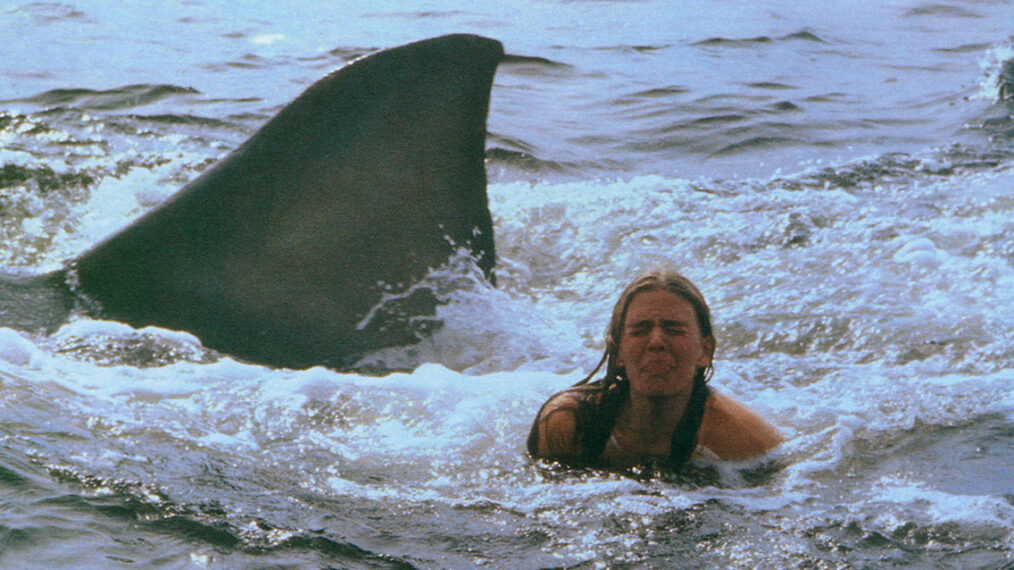
When it comes to the four-film Jaws franchise of the 1970s and ’80s, perhaps a bit lost between the high point of director Steven Spielberg‘s classic 1975 original adaptation of Peter Benchley‘s bestselling novel, and the nadirs of 1983’s Jaws 3 (or Jaws 3-D) and 1987’s Jaws: The Revenge, is the first sequel, Jaws 2, which was released June 16, 1978.
Looking back at Jaws 2 45 years after it hit theaters, it’s one of those movies, like The Godfather Part III, that, while certainly unnecessary, may have a worse reputation than it deserves. That probably stems from its unenviable position in the Jaws franchise, where it not only suffers from a comparison with its brilliant predecessor of just three years earlier, but is likely also retroactively tainted by its two far worse followers that came over the next nine years.
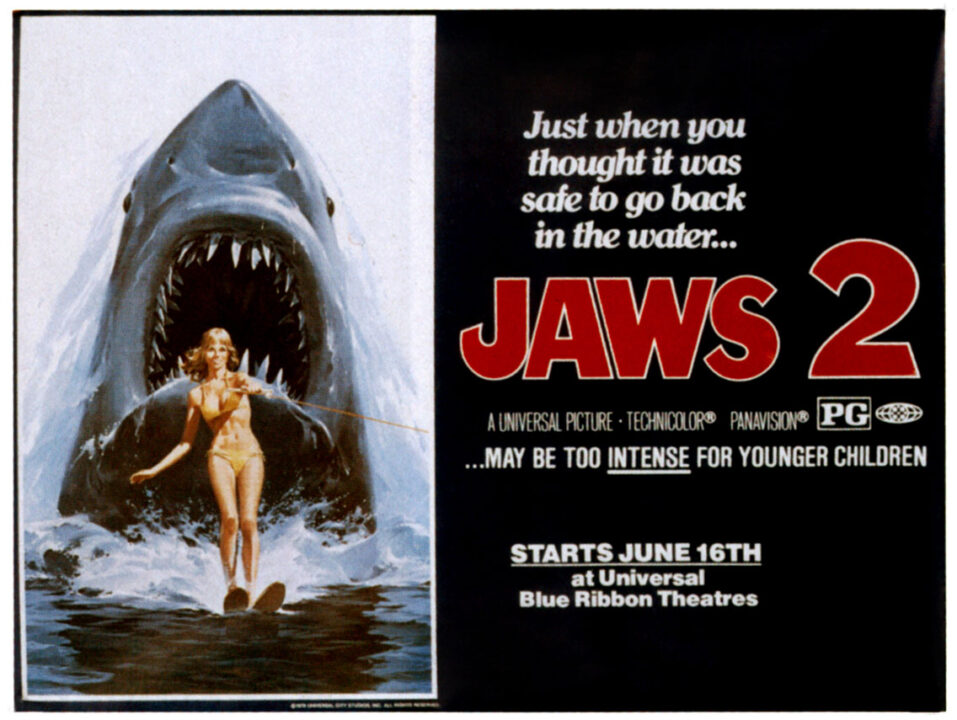
(© Universal Pictures/Courtesy Everett Collection)
One of the strengths Jaws 2 has going for it is not even within the film itself, but lies in its famous tagline, one of the best in movie history, seen in the above photo of a subway poster for the film: “Just when you thought it was safe to go back in the water …”
That tag is terrific not only for the film it is specifically related to, but it also went on to become quotable in relation to just about anything that has a sense of ominous danger ahead: “Just when you thought it was safe to [fill in the blank] …”
So, that tagline is one area where Jaws 2 actually surpasses Jaws, whose tagline was just: “The terrifying motion picture from the terrifying No. 1 best seller.” An accurate statement, for sure, but not especially cool or memorable.
You’ll also notice in this poster that they re-create the Jaws poster’s famous image of the shark swimming upward, with mouth agape, ready to grab an unsuspecting person, only this time the shark is breaching the surface as it goes after an oblivious water-skier. I find this poster pretty sweet in its own right, even if not as iconic as the Jaws one.
This poster also indicates that, like Jaws, while rated PG, Jaws 2 “MAY BE TOO INTENSE FOR YOUNGER CHILDREN.” This warning seems to be more prominent, and with a strong emphasis on the “intense” part, than the similar warning in Jaws.
The original certainly had shocking moments of blood and intense action, which people may have been surprised to see in a PG film. Maybe producers wanted to nip any complaints in the bud by making this clear, since Jaws 2 has its share of similar moments. Both movies certainly would have had at least PG-13 ratings had they been released a decade later.
Once in the film, one thing that helps Jaws 2 at least be interesting is the return of some of the original’s stars, notably Roy Scheider as poor Amity Island police chief Martin Brody, who has to once again convince people that a shark is threatening their tourist community just three years after the first one, a scenario that seems as improbable to most of the island’s residents as it does to the people watching the movie.
From accounts I’ve read, it sounds like Scheider really did not want to do another Jaws film, and only returned here to settle a contractual dispute with Universal. It’s a credit to Scheider’s professionalism as an actor that despite apparently being unhappy on the set, and frequently arguing with director Jeannot Szwarc, he does not phone in his performance, and seems to get into the proceedings.
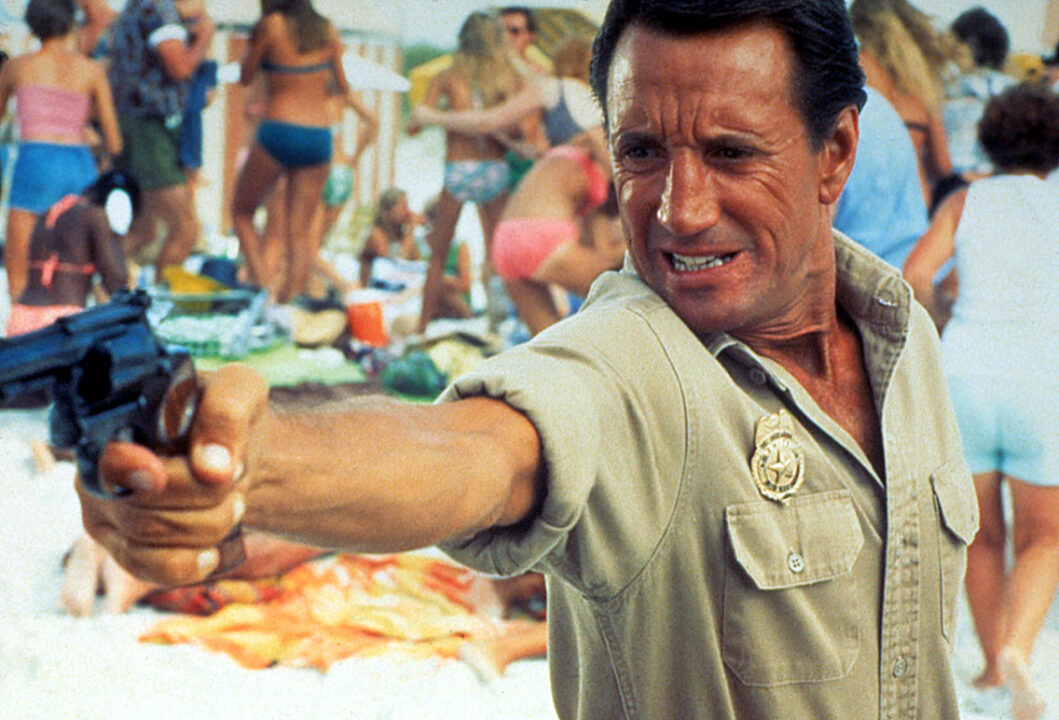
“Smile (again), you son of a …!” (© Universal Pictures/Courtesy Everett Collection)
Also returning is Lorraine Gary as Martin’s wife, Ellen Brody, who has a more substantive role here than in the original, taking part in some of the local town council intrigue that goes on as well as joining Martin for a little bit of the climactic ocean-going action (along with Deputy Hendricks, played by a returning Jeffrey Kramer).
Back as well is Murray Hamilton as Amity’s infamous Mayor Larry Vaughn, a character who for a while seemed preposterous in his willingness to ignore a particular problem until it swims up to bite him in the ass, but maybe not as much anymore.
Mayor Vaughn has become the focus of a popular social media meme in the last decade or so, which, along with its tagline, is another enduring legacy in which Jaws 2 plays a part.
Like so many of these memes, I have no idea where or when it started, or who created it, so I cannot give the person proper credit, unfortunately. But the meme basically points out how the inept mayor from Jaws in still the mayor in Jaws 2, indicating how important it is to vote in your local elections.
One example of this meme’s many incarnations is below:
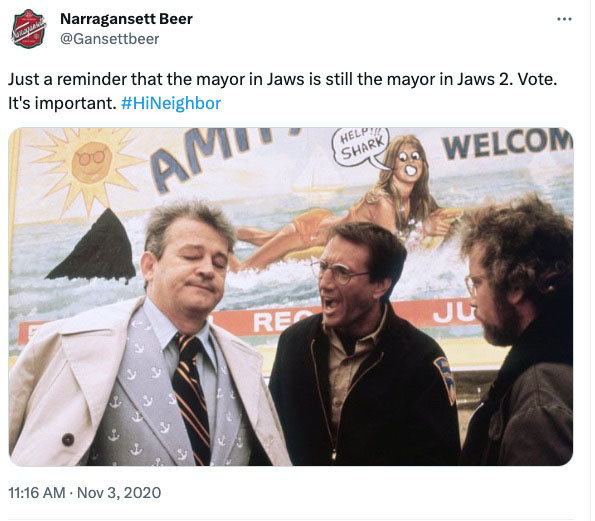
(Twitter/@Gansettbeer)
Maybe too many Amity voters actively went for a man who did not have their best interests in mind, or perhaps a majority were too apathetic to vote at all. I also don’t know how long mayoral terms are in Amity, so maybe Larry’s stint in office had not yet ended in the years between Jaws and Jaws 2. But you still might have thought that he’d at least have been impeached or forced to resign in shame for his actions (and inactions) in the summer of ’75.
One of the most important people returning from Jaws for Jaws 2 that helps it succeed more than it should is someone who contributes greatly behind the camera — composer John Williams. With his score for Jaws 2, Williams, of course, utilizes his famous dum-dum-dum-dum theme that was part of his Oscar-winning score for the first film.
But as a true creative professional, Williams does not over-rely on that. And, as he did in Jaws, he also creates other themes for various scenes and characters in the film, like a track called “Ballet for Divers,” which accompanies the movie’s first scene in which scuba divers find the wreck of Quint’s ship, the Orca.
Also of note is Williams’ theme for the last part of the film, when a group of teenagers, including Brody’s son Michael, take to the open water for a day of sailing. It is exciting, uplifting and sounds very Williams-y, and is somewhat reminiscent of the “sea chase” music from Jaws as the Orca pursued the shark way out at sea.
And, of course, since this was a movie produced in the late ’70s, I think it must have been pretty much required by law to have disco versions of at least some of its themes. I don’t think Williams was involved with these, but they are still fun examples of the sort of cheesiness associated with so much of pop culture in that era:
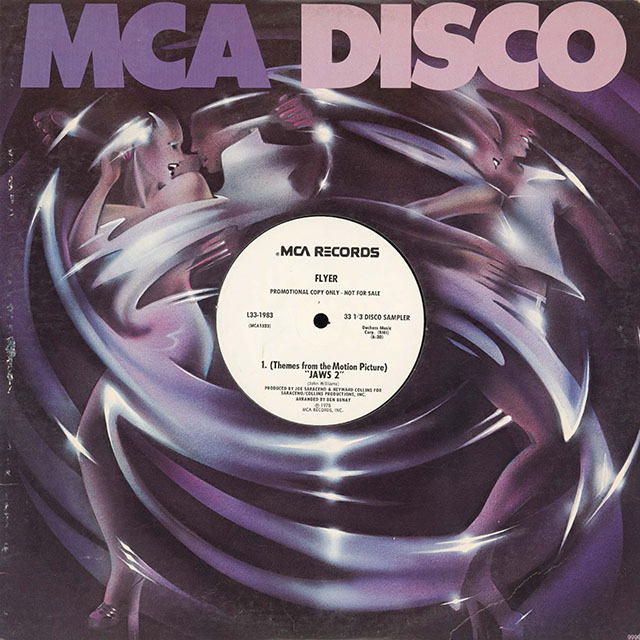
(© 1978 MCA Records, Inc./Internet Archive)
Another thing I like about Jaws 2 is that, despite its very familiar setting and story, it at least tries to come up with some different scenarios. There is an early scene with that water skier featured on the poster that ends up with a fiery boat explosion that actually leaves the shark with part of its face burned, making it seem, in subsequent appearances, like an evil slasher such as Freddy Krueger, or one of those type of dudes.
Speaking of slasher films, the scenes near the end with the teens aboard their sailboats — who are just looking to hang out and/or make out, not realizing until it’s too late they are being stalked by the shark, some of them getting separated from the group — feel like a precursor to the similar setups in the horror movies featuring human killers that would soon begin populating theaters starting with Halloween just a few months later in ’78.
Jaws 2 also finds a cool way for its evil-looking shark to die at the end, even if it can’t top the original, when Brody fires a bullet into an oxygen tank in the shark’s mouth and blows it up right after saying, “Smile, you son of a …!”
Here, Brody manages to dredge up a power cable from the sea floor and is able to get the shark to bite on it, which electrocutes it and somehow causes it to catch on fire. The scene looks neat, but the “cool line” they gave Brody to say right before the action is weaker this time: “Open wide! Say aah!”
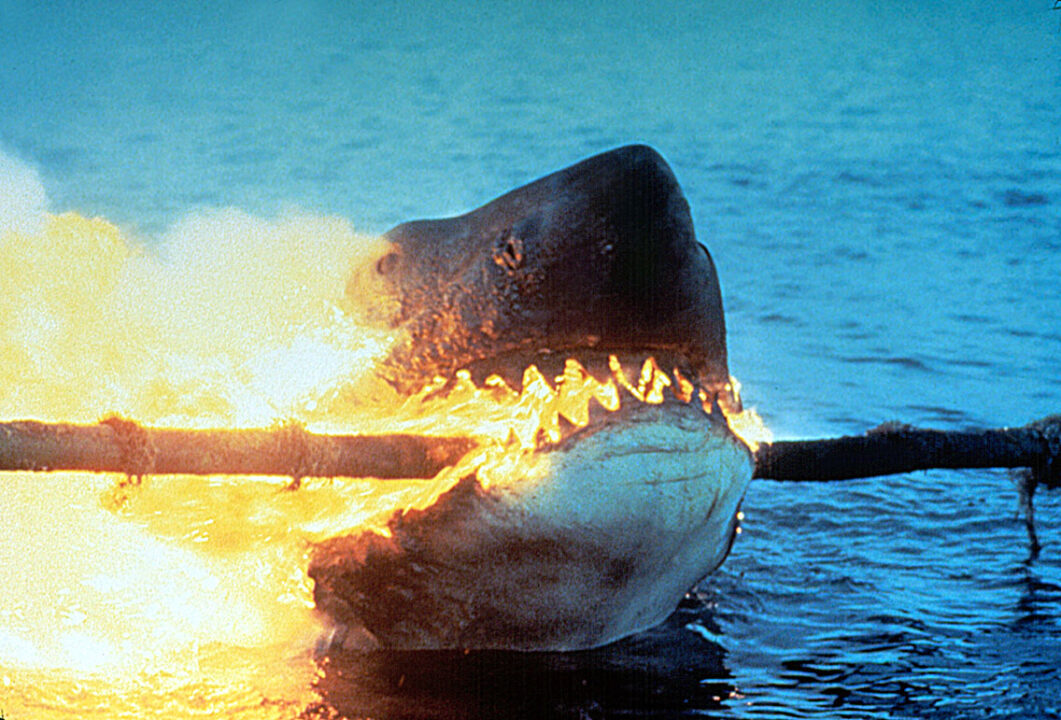
Spoiler alert: The shark dies in this one, too (© Universal Pictures/Courtesy Everett Collection)
All of the above elements make Jaws 2 ultimately an okay and watchable flick if you happen to catch it on TV or something.
But there are things that stand out that also make it very clear throughout that you are watching a lesser version of Jaws. The biggest is the noticeable absence of some key players from the original. While director Jeannot Szwarc is a capable, if average, director from what I’ve seen (along with Jaws 2, his other notable works are 1980’s Somewhere in Time and 1984’s Supergirl), he is no Steven Spielberg.
Spielberg’s absence behind the camera is really felt here, and his creative eye was a big part of what made the original so special, especially in earlier scenes when the shark is not seen outright. In those scenes, Spielberg milks the tension using the fear of the unseen and what may be lurking below the water (even if that decision may not have been entirely driven by creativity as much as by mechanical difficulties with the shark).
In Jaws 2, the shark is seen too often, to the film’s detriment, given that it looks like something you’d encounter on the Jaws ride at Universal. If Jaws had gone this route, it may not have been as effective as it was. In a movie like this, I think you’d want your monster to maintain an air of mystery for an audience, wondering where it might be in the water and when it might strike. You don’t want it to become too familiar with frequent viewings, or worse, to be seen as laughable, which it does here at times.
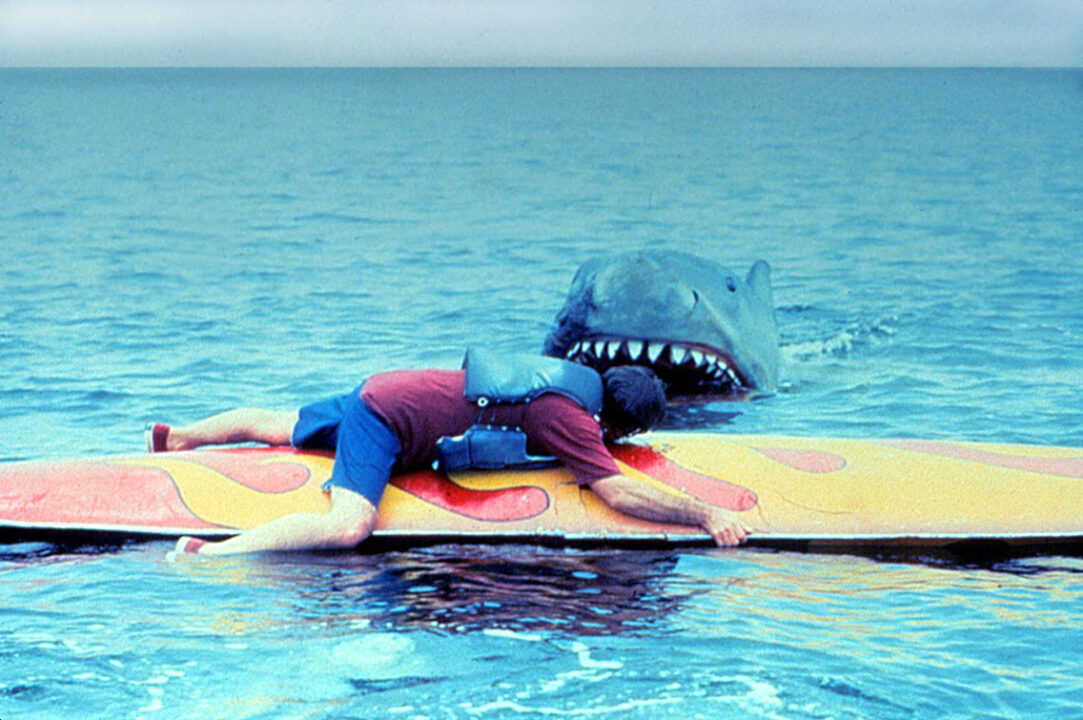
(© Universal Pictures/Courtesy Everett Collection)
Also missing are two key actors from Jaws who, with Scheider’s Brody, made the last third of that film a fun and exciting ocean adventure/buddy film as well as a thriller: Richard Dreyfuss as Matt Hooper and Robert Shaw as Quint, captain of the Orca.
Quint, of course, met a horrific end in Jaws, so he obviously could not feature here.
Dreyfuss was not saddled to this sequel as Scheider was, and he certainly didn’t need to reprise his role; he had become an in-demand star and was busy leading other films like Close Encounters of the Third Kind and The Goodbye Girl, in which he won a Best Actor Oscar.
So Hooper is not around to help Brody again (there is a scene where Brody calls Hooper, who is not seen, and learns the marine biologist is on an Antarctic research expedition; in real life Scheider may have wished to be in Antarctica rather than on the Jaws 2 set).
None of this necessarily kept people from going to see Jaws 2, though, even if it wasn’t in the great numbers that showed up for Jaws.
During its opening weekend of June 16-18, 1978, Jaws 2 played in 640 theaters, grossed $9.8 million and was No. 1 at the box office (actually edging out Grease, which also opened that weekend in 862 theaters, by just under $1 million, though the latter film ultimately went on to win the week, and the year as a whole).
Over its initial release in ’78, Jaws 2 grossed about $77.7 million (it had a re-release in February 1980, which grossed a little more than $4 million). It was the sixth-highest grossing film of 1978, nestled between No. 5, Heaven Can Wait, which opened June 28, the Wednesday heading into the long Fourth of July weekend, and No. 7, Saturday Night Fever, which had been released in December of ’77.
So, not the boffo box office of Jaws, which grossed over $260 million during its initial release, but still a respectable showing.
And another measurement by which Jaws 2 was better than Jaws 3, which grossed $45.5 million in ’83, and Jaws: The Revenge, which took in $20.8 million in ’87 as the franchise mercifully ended before it sank to even further depths.

